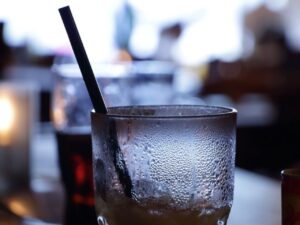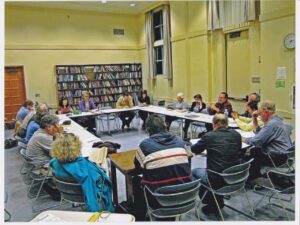[imagesource: AdobeStock]
Apart from its reputation as a trippy party drug, LSD is perhaps most famous for its use in Project MK-Ultra, the code name given to a Central Intelligence Agency (CIA) program that began in the 1950s, lasting through to the 1960s.
You might know it as the CIA’s ‘mind control program’.
Through the years, the agency experimented on both volunteers and unwitting subjects to see if the drug could be used as a psychological weapon in the Cold War. Hypnosis, shock therapy, interrogation, and other controversial and experimental mind-control techniques were also part of MK-Ultra.
The secret experiments came to light in the 1970s resulting in numerous lawsuits and a full-scale investigation.
The hallucinogenic featured prominently in Netflix’s new show Have a Good Trip, where celebrities recount their experiences on acid.
For something that has terrified, intrigued, and entertained the public for decades, the drug came about in a pretty mundane way, according to BBC.
It was discovered by Albert Hofmann (below) who was conducting research for pharmaceutical firm Sandoz (now part of Novartis) to find a plant-derived circulatory and respiratory stimulant.
He found a stimulant – just not the one he was looking for.
Hofmann’s job was to isolate, purify and synthesise potentially interesting compounds from ergot, a rye fungus. Several of these involved lysergic acid, including one Hofmann discovered in 1938 – the one filed away as LSD-25.
Animal tests proved that the compound did nothing for circulation or respiration, and was discontinued. That would have been the end of the drug if five years of nagging curiosity, bolstered by an experience from his childhood, didn’t inspire Hofman to take a second look at it.
“One enchantment…I experienced in childhood, has remained remarkably vivid in my memory ever since. It happened on a May morning…on a forest path on Martinsberg above Baden, Switzerland.

As I strolled through the freshly greened woods filled with bird song and lit up by the morning sun, all at once everything appeared in an uncommonly clear light…. It shone with the most beautiful radiance, speaking to the heart, as though it wanted to encompass me in its majesty. I was filled with an indescribable sensation of joy, oneness, and blissful security.”
This experience and others convinced him that there was a “miraculous, powerful, unfathomable reality that was hidden from everyday sight”, and so on April 16, 1943, he re-synthesised LSD-25.
During the purification process, he accidentally absorbed some of the drug into his system, following which he experienced a “dreamlike state”.

Three days later, he took a deliberate dose of the compound, far more than he should have, and headed out on his bicycle.
Hofmann described his trippy trip home with an exactness of scientific observation that contrasts with the psychological wildness of the experience. “Kaleidoscopic, fantastic images surged in on me, alternating, variegated, opening and then closing themselves in circles and spirals, exploding in coloured fountains, rearranging and hybridizing themselves in constant flux,” he wrote in his book LSD – My Problem Child.
“Every acoustic perception, such as the sound of a door handle or a passing automobile, became transformed into optical perceptions. Every sound generated a vividly changing image, with its own consistent form and colour.”
And, thus, psychedelics were born.
In Basel, where LSD came into being, they now celebrate Bicycle Day on April 19 to commemorate Hofman’s experience.
Festivities include trippy music, art events, and science conferences which focus on research into psychedelic compounds. There is also a bike ride through the city, modelled on Hofman’s route.
LSD later went global, and was a massive part of hippie culture. Psychologists have also looked into its potential to assist with PTSD, and as mentioned earlier, government organisations have employed it for nefarious purposes.
I once spent a lovely afternoon running around in nature, appreciating the pretty lights, until the grass ate my cigarettes.
BBC delves further into the history of the drug, here.
[source:bbc]





